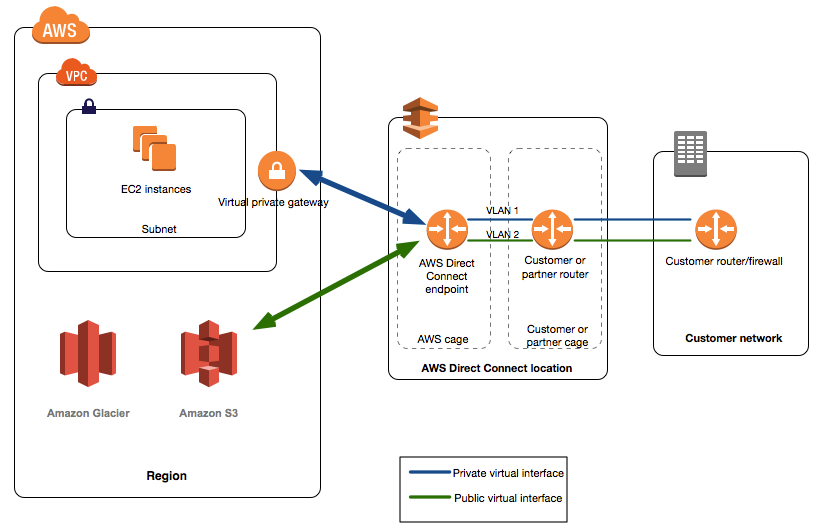Cloud Deployment Model for Data Center Connection
Question
A customer's Data center and its applications are connected to AWS using a dedicated network (Direct Connect).What is the Cloud deployment model?
Answers
Explanations
Click on the arrows to vote for the correct answer
A. B. C. D.Answer: D.
Option A is incorrect.
When an application is fully deployed on a vendor's (AWS, Google Cloud) Cloud Infrastructure, it is termed as a Public Cloud.
The application features may have been either developed on the cloud (Cloud Native) or migrated from an existing Client's On-Premise infrastructure.
Our scenario uses both the Customer's Data Center and AWS.
Option B is incorrect.
A multi-cloud leverages different Cloud Provider's environments.
He may deploy his applications on AWS and GoogleCloud-based on compute speed requirements, availability of managed services etc...With the use of Multi-Cloud, it is best to use Open Source tools like Terraform for Infrastructure as Code, Splunk for monitoring that are cloud vendor-agnostic to avoid vendor lockin.
Since our scenario uses only the Customer's Data Center and AWS, there are no multiple cloud deployments.
Option C is incorrect.
A Private Cloud refers to a cloud environment that has been built In house on the Client's premises using Virtualization and resource management tools.
Private clouds are usually built for specific security and regulatory requirements, specially hardware or configuration requirements, and extremely critical network latency that may not be possible on a vendor's public cloud platform.
Since our scenario has both the Client's data center & the AWS Cloud, it will not result in a PrivateCloud configuration.
Option D is CORRECT.
The cloud deployment model is a Hybrid Cloud.
Hybrid clouds are often used where there is a requirement of burst capacity where workloads are “spilled over” to a different cloud environment to meet capacity demands for a short period of time.
Here, purchasing capacity may not be a good idea since it will be extremely ineffective from a cost standpoint resulting in under utilization of resources once the requirement for capacity ends.
The other compelling use case for a Hybrid cloud is a Highly Available / Disaster Recovery environment where the cloud model offers a lot of flexibility in making resources in the event of a Datacenter failure where the client may not need upfront investments for resources for an alternate site.
Diagrams:
References:
https://youtu.be/X1qoKLL040A https://youtu.be/X_ZZO-oeNeg https://youtu.be/9KZL0_NuiUU
The cloud deployment model describes how an organization deploys its applications and data in the cloud. There are four primary cloud deployment models: public, private, hybrid, and multi-cloud.
A public cloud is a deployment model where a third-party cloud service provider makes resources, such as virtual machines, storage, and applications, available to the general public over the internet. In this deployment model, the cloud provider owns and manages the infrastructure, including the hardware, software, and network components.
A private cloud is a deployment model where the cloud resources are dedicated to a single organization, and the organization owns and manages the cloud infrastructure. The private cloud may be hosted on-premises or by a third-party service provider. The primary benefit of a private cloud is the increased control and security it provides.
A hybrid cloud is a deployment model that combines public and private clouds to leverage the benefits of both. In a hybrid cloud, an organization can run its applications and store its data in either a public or private cloud and move workloads between the two environments as needed.
Multi-cloud is a deployment model where an organization uses multiple public cloud service providers to distribute workloads across multiple clouds. In this deployment model, an organization may use different cloud providers for different applications or services, leveraging the strengths of each provider.
In the given scenario, the customer's data center and applications are connected to AWS using a dedicated network (Direct Connect), which means that the customer has a private connection to AWS. Therefore, the deployment model is a private cloud.
